Movies
Interview: Writer/Director Damian McCarthy on ‘Caveat’ and That Creepy Rabbit
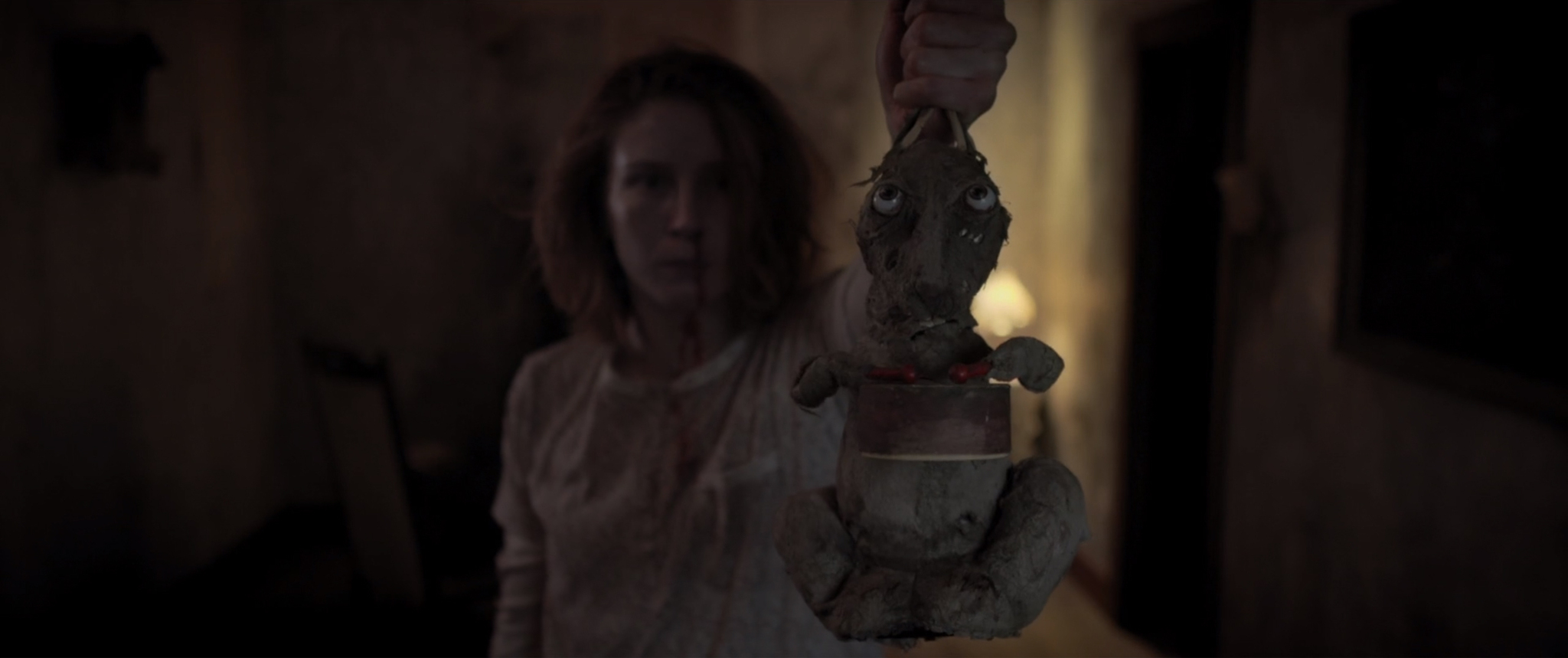
The horror short aficionado may be familiar with Damian McCarthy’s work; he’s created a number of chilling shorts (which can conveniently be found online), all soaked in atmospheric tension. With Caveat, his feature film debut, McCarthy builds a chilling Irish horror with a decaying aesthetic that fills each scene with dread.
Caveat tells the story of a lone drifter with partial memory loss who accepts a job to look after a psychologically troubled woman in an abandoned house on an isolated island. The job sounds simple enough, but there’s one big caveat. He must stay locked in a leather harness that’s chained to the floor of the basement in the rotting home, restricting his movements through the house and making any kind of escape near impossible.
I absolutely loved the film (which is now available on Shudder — you can read my full review here), so when I had the opportunity to speak with McCarthy about Caveat, his inspirations, the hair-raising score, and that creepy rabbit toy, I simply couldn’t resist.
(Click here to watch the trailer)
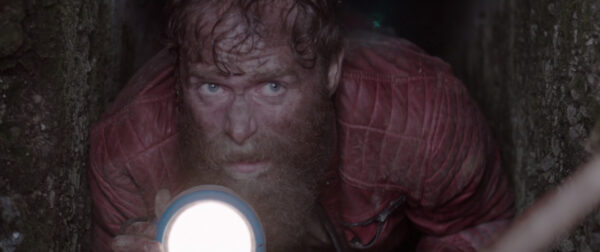
Kelly McNeely: So I loved the concept of Caveat. It’s bananas, every twist and turn that they list as they’re going through all the details of the job… just brought me such great joy. Where did the idea of this movie come from?
Damian McCarthy: I guess in terms of a horror, I always wondered why didn’t they ever leave the house? You know, the house is haunted. Why don’t they just leave? And there are films that have done a good job of it like The Evil Dead 2, you know that the bridge is out, so they can’t leave — The Vigil is a good one too, you know, people have come up with creative ways. But I just thought it was like, to me, it’s a very old idea that I had, the idea that a guy would willfully put on this harness. And he’s allowed to walk around the house but not get into this one room because of this long chain, attached to the harness. And then obviously the creepier things get, you’ve immediately put this roadblock in his way from leaving. And I just thought that would make it a lot scarier, because no matter what happens to him, he can’t leave the house. He can’t just run out, you know, there’s no room to go into to hide. So I just thought it’d be an interesting way to see if you could build suspense like that and make it more, I guess, make it a lot more tension filled.
Kelly McNeely: I think it absolutely builds suspense. There’s like a heavy sense of dread throughout the film that I really, really love. I think it’s way more effective than the jumpscares, because it never lets up — this idea that he can’t escape. I’m curious what horror films do you enjoy, what inspires you? I’ve watched some of your short films as well, and I’ve noticed this really dark sort of dreadful, dreary quality to them.
Damian McCarthy: For horror films, I guess I would probably swing more towards ghost stories, the supernatural, the likes of you know, Hideo Nakata’s Ringu, I think is one of the most terrifying films ever made. And then I love John Carpenter’s The Thing. That’s probably my favorite movie. The Evil Dead 2, of course, but probably less interested in, you know, torture and violence and stuff like this, even though I still watch them. And then slashers, of course, I think slashers are very entertaining.
But I guess when we went to make Caveat, it was very much like, let’s try to even light it and shoot it like it’s more of a ghost story than something kind of violent. Because again, any images from the movie will be a guy, you know, in a letter harness and a chain. If he was doused in reds and greens, you would think, okay, it’s going to be some kind of a torture movie like Hostel. But yeah, I guess kind of more supernatural horror, definitely. That’s where I would track down myself just as a horror fan.
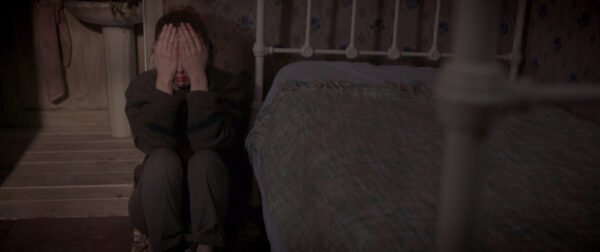
Kelly McNeely: Was there anything that directly inspired the film when you were coming up with the concept and the visuals?
Damian McCarthy: I think we looked at a lot of Guillermo del Toro’s movies, just because they’re so beautiful. I mean, no, I’m not saying we achieved anything like that, but it was definitely something that we talked about a lot at the start just in terms of the lighting and a lot of shadows and things like that. The Woman in Black was another movie that we looked at to reference because again, it’s a very dreary old house in the marsh with a lot of decay and peeling wallpaper and rusty floorboards, this kind of thing. So that was very much much the aesthetic we were going for.
In terms of story, I guess not, I suppose it’s really like a big culmination of just all the horror tropes that I like over the years. I mean, don’t go down into the basement — he goes down to the basement. I mean, he really does make every single mistake you could make in a horror film. There’s a hole in the wall — of course he has to stick his face in and see what’s in there. And even to start with, he puts on this harness with a long chain, on an island, alone. So yeah, I mean, it really is one bad decision after another.
Kelly McNeely: I want to talk props for a moment if I can, because that rabbit! Where did you find that rabbit?
Damian McCarthy: It was just a fluffy drumming bunny that I got somewhere on eBay years ago. I mean I think I’ve had that rabbit for about seven or eight years now. And I took all the fur off and tried to make it look, you know, demonic and stuff. And it looked like an Ewok from Star Wars when I finished, it wasn’t scary at all. So I took it to this theatre designer — she does a lot of props and things like this for theater here in Cork.
I brought her in the bunny, and I said basically, can you make this look like it’s kind of falling apart and it’s very old? And I brought her some images from this very old Czech movie from the 80s about Alice in Wonderland. And it’s got this really kind of freaky stop motion, and it’s very unsettling. And I remember this rabbit in it — and I saw it when I was small — and it really just stuck with me, the way this guy was moving, the rabbit with the pocket watch and things, but he was just horribly unsettling. So I brought her images of him and kind of some other stuff. And she basically a couple of weeks later came back with what you see on screen. It was incredible, I was delighted with it. Now when we first got him, he did have kind of fur patched all over him. But it took us so long to get financing for the movie all of the hair just fell off– he went bald.
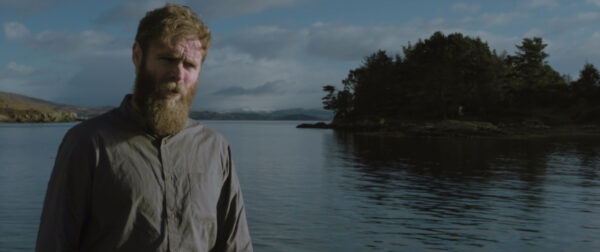
Kelly McNeely: Can you talk a little bit about the filming location? Was this actually shot on that island? If so, I imagine there would have been some challenges with getting out there…
Damian McCarthy: No, luckily we didn’t shoot on the island, I’m from West Cork in the southwest of Ireland. So we found — basically — a big empty building at the back of this house. It’s a big tourist attraction in Bantry — where I’m from — it’s called Bantry House. They’ve got the big stables at the back that are completely empty. We built… I think, 70 or 80% of what you see on screen is a set, a lot of all rotten timber and everything de-aged to make it look old and decaying and, and falling apart. And I think there’s only like two rooms in the movie that are, you know, actual locations in the house. Luckily for us, they were just there on the set, there was very little moving around. Again, this is all budget restraints, because we’d such little time and money that it kind of had to all happen in the one place. The island is — just the island that you see in the movie — it’s just one of these islands off the coast of West Cork. And you just make it look like we’re filming out there. But I can’t imagine having to travel out there each morning. It would have been difficult.
Kelly McNeely: Now, Richard Mitchell’s score is hair raising. How did he come on board? Because I know the score is kind of quite different from the other work he’s done. But it sounds very similar to the music that you’ve use in your shorts. Were you giving much direction with the music, or was he sort of running with it on his own? How did that come into play?
Damian McCarthy: Yeah, Richard had the biggest influence. Richard was my right hand man making Caveat, I don’t think it would be what it was without him. He was brilliant, even in terms of editing and storytelling, and all those were a huge help to me. I mean, he’s been in the business, like over 30 years. So he was a great guide to have through it. For the music, I don’t think he’d done any horror films. I don’t even know if he was a fan of horror going into this. He is now — he loves horror now.
But I guess he had a lot of strange music on file. And we just listened to a lot of these experimental things he had been doing, I think we’d find like, oh, that would be quite good there. But we would have to, you know, he’d have to work on it, or he’d have ideas to make it fit with the scene more. And he just went from there. It did take months, it took months of just trying to figure out — trying to get the tone right. Never to have it too over-the-top horror or too unsettling. I mean, that was a little bit of a battle at times because I was like, Richard, this isn’t scary at all. He was like, you know, trust me, we need to ease people into it. So for that, yeah, he was absolutely right. And there are long stretches in the film where there is no dialogue. It really relies heavily on the score. So you know, work had to be put into it. And he did. He did a fantastic job.

Kelly McNeely: It’s a phenomenal score. It’s just so deeply unsettling. And one of the things I love about the film as well is that it’s sort of a perfect storm of “No thank you”. Every detail that comes up is just like, no, no, no, no, no, no. Were there more ideas that you had? Did you ever get to a point you’re like, I should stop adding on to this massive laundry list of nope? Or did you get to keep going with it?
Damian McCarthy: I don’t think we cut anything. I think we didn’t cut any more things that he shouldn’t agree to, because when he does make all these bad decisions, he does go to the island he does put on the thing. But I tried to speed it up in the edit in terms of when the guy gets them onto the island and says okay, now I need you to put on this harness and I’m gonna lock you in this chain.
That conversation they have where he’s like, well, I’m not putting it on — this back and forth — it did go on for longer. But again, just when you’re editing and you can kind of see what the actors are doing, it’s like, I don’t need them to convince me this much. And it’s a horror film. So it’s not supposed to be taken all that seriously. You know, I think you’re supposed to have that, you go with it, just go with it a little bit.
But no, there was nothing else. I think there was one scene and we shot it, but it didn’t really work. Spoiler, I guess, but he escaped the house, but he has to come back. We shot out in the woods where he did try to escape. And all the sounds of the foxes were closing in on him. And I don’t know, it just seemed to turn into The Blair Witch Project for about five minutes. And it was like, let’s just say it’s very cold outside. He has to come back. And it worked.
Kelly McNeely: Yeah, the sound of the foxes, by the way, kudos for that. Because I had no idea that they sounded that much like, as the script says, teenage girls screaming. That’s an interesting way to describe it.
Damian McCarthy: Yeah. Well, my sister lived in London, and there’s always foxes roaming around the streets early in the morning. If you hear them, it’s weird, they’re very unsettling. In Ireland here, you know, that’s where the idea of the Banshee comes from. It’s the sound of a fox screaming or crying.
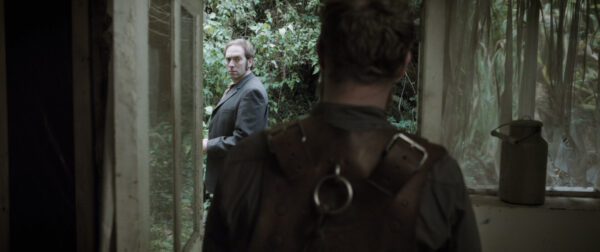
Kelly McNeely: You’ve obviously done a lot of short films, but Caveat, I believe, is your first feature. Do you have any advice you’d pass on to aspiring filmmakers?
Damian McCarthy: In terms of short films, short films are the only way I think to get going, because they’re such a good calling card to, you know, to get to that feature. I mean, I made a film like 11 years ago called He Dies At the End. And my producer had seen that short film at Fright Fest in London. And that kind of inspired him to go off to start to get into film production. So to start with, definitely short films, and getting them into the right film festivals. It’s definitely the best place to start.
Because even when MPA came along to distribute the film, they had gotten in touch to say, oh, you know, we saw that it was the director of He Dies At the End, of these short films that I’ve done years ago that played at Screamfest. And they were sort of curious to see what you’ve done now with a feature, because my short films were so simple, there was no dialogue, it was kind of one guy getting tortured by whatever it was, or getting haunted by something. So definitely the importance of short films, I couldn’t go into it enough.
And then just for feature filmmaking, I would say work on the script. That’s the thing, because you’ll find all your problems once you get into the edits. That’s what I found anyways, I think it was the fastest script that I’ve ever put together. And it was really because the funding was there, this little bit of financing that we had appeared, and I think I was so worried about losing it I was like, okay, we need you to start building the sets, and I’ll start finishing the script, you know, there was a little bit of, I guess, self imposed pressure not to lose the chance of making a feature. So the script will be important.
And then after that, I guess, pick your crew right. You know, work with people that you know. It’s like, try to work with people that you think you could go on holiday with, that you could spend time with. I know it’s still a job and you have to have that distance as well. But you absolutely have to have something in common with the people and get along. And know that you’re there to do the same thing and, you know, your budgets are limited and all this kind of stuff. Yeah, I think importantly, you know, pick your crew well, work on your script.
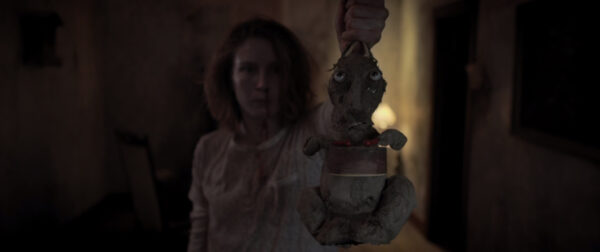
Kelly McNeely: And what was the biggest challenge when filming Caveat?
Damian McCarthy: The crew would say the cold — it was freezing cold. So I think every behind the scenes picture has like somebody huddled with a hot water bottle.
Kelly McNeely: Like The Evil Dead, where you’re burning the furniture by the end of the shoot?
Damian McCarthy: We did actually [laughs]. Yeah, we did. The biggest challenge to make it… We hit our budget, you know, perfectly. We hit our time every day because I had everything storyboarded, everything and in detail so I knew what I wanted. My director of photography was well prepared — we had two guys on camera and two guys in sound. Tiny crew.
The biggest challenge other than that was, the bunny was extremely difficult. It kept breaking down. It was like that, you know, you hear stories about the shark from Jaws. You’d be like, okay, action! And the bunny’s supposed to start drumming, and you realize he’s just… nothing, because like a cog has broken inside him or a wire has come loose. So yeah.
Yeah, I think probably the bunny was. I mean at times I wanted to just kick it across the room because it was like, it just stops again, we’re running out of time, and you’ve got to, you know, open them up and try to find the missing wire after snapping. That’s probably a weird, weird complaint for what was the biggest problem making the film? Oh, the bunny.
Kelly McNeely: The biggest diva on set.
Damian McCarthy: Yeah, he was [laughs]. Actually it was funny, because when we finished, the last time you see him drumming on film, that is the last time, he never actually drummed again. We got one take of Leila [Sykes] coming down the stairs and you see him there, and he’s drumming. And I said, okay, we get one more, you know, just just in case, whatever. And it was like, no, just that was it. He was done. So, you know, never work with children, animals and drumming bunnies.
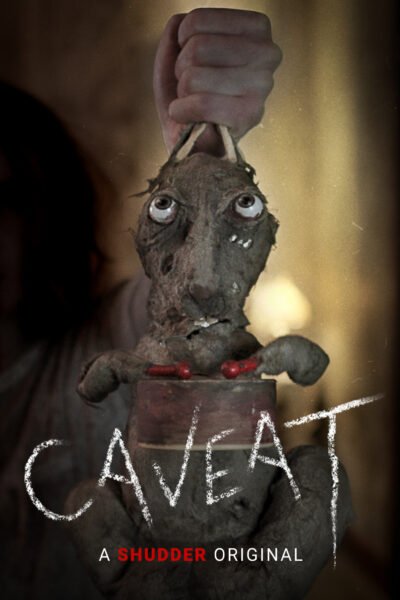
'Civil War' Review: Is It Worth Watching?
Follow our new YouTube channel "Mysteries and Movies" here.

Movies
‘Longlegs’ Creepy “Part 2” Teaser Appears on Instagram
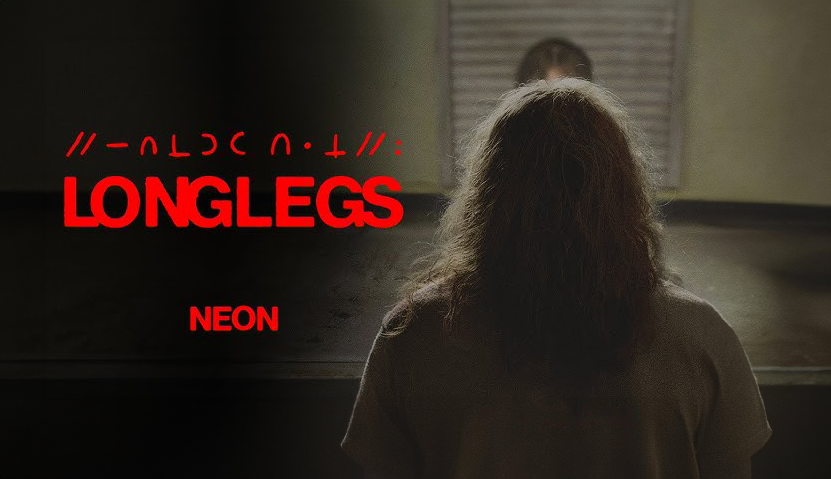
Neon Films released an Insta-teaser for their horror film Longlegs today. Titled Dirty: Part 2, the clip only furthers the mystery of what we are in for when this movie is finally released on July 12.
The official logline is: FBI Agent Lee Harker is assigned to an unsolved serial killer case that takes unexpected turns, revealing evidence of the occult. Harker discovers a personal connection to the killer and must stop him before he strikes again.
Directed by former actor Oz Perkins who also gave us The Blackcoat’s Daughter and Gretel & Hansel, Longlegs is already creating buzz with its moody images and cryptic hints. The film is rated R for bloody violence, and disturbing images.
Longlegs stars Nicolas Cage, Maika Monroe, and Alicia Witt.
'Civil War' Review: Is It Worth Watching?
Follow our new YouTube channel "Mysteries and Movies" here.
Movies
Melissa Barrera Says ‘Scary Movie VI’ Would Be “Fun To Do”

Melissa Barrera might literally get the last laugh on Spyglass thanks to a possible Scary Movie sequel. Paramount and Miramax are seeing the right opportunity to bring the satirical franchise back into the fold and announced last week one might be in production as early as this fall.
The last chapter of the Scary Movie franchise was almost a decade ago and since the series lampoons thematic horror movies and pop culture trends, it would seem they have a lot of content to draw ideas from, including the recent reboot of slasher series Scream.
Barerra, who starred as final girl Samantha in those movies was abruptly fired from the latest chapter, Scream VII, for expressing what Spyglass interpreted as “antisemitism,” after the actress came out in support of Palestine on social media.
Even though the drama wasn’t a laughing matter, Barrera might get her chance to parody Sam in Scary Movie VI. That is if the opportunity arises. In an interview with Inverse, the 33-year-old actress was asked about Scary Movie VI, and her reply was intriguing.
“I always loved those movies,” the actress told Inverse. “When I saw it announced, I was like, ‘Oh, that would be fun. That would be so fun to do.’”
That “fun to do” part could be construed as a passive pitch to Paramount, but that’s open to interpretation.
Just like in her franchise, Scary Movie also has a legacy cast including Anna Faris and Regina Hall. There is no word yet on if either of those actors will appear in the reboot. With or without them, Barrera is still a fan of the comedies. “They have the iconic cast that did it, so we’ll see what goes on with that. I’m just excited to see a new one,” she told the publication.
Barrera is currently celebrating the box office success of her latest horror movie Abigail.
'Civil War' Review: Is It Worth Watching?
Follow our new YouTube channel "Mysteries and Movies" here.
Lists
Thrills and Chills: Ranking ‘Radio Silence’ Films from Bloody Brilliant to Just Bloody
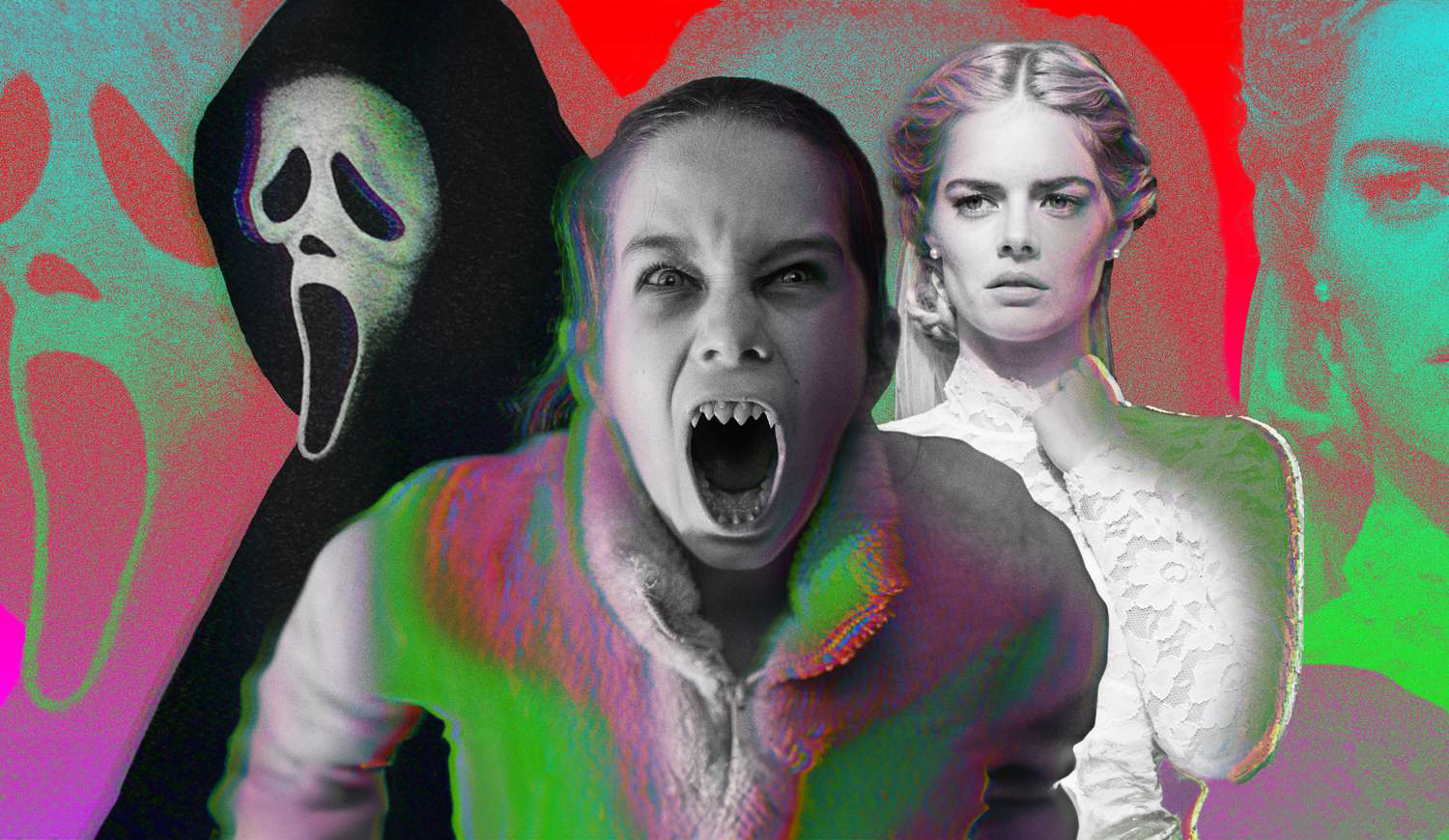
Matt Bettinelli-Olpin, Tyler Gillett, and Chad Villella are all filmmakers under the collective label called Radio Silence. Bettinelli-Olpin and Gillett are the primary directors under that moniker while Villella produces.
They have gained popularity over the past 13 years and their films have become known as having a certain Radio Silence “signature.” They are bloody, usually contain monsters, and have breakneck action sequences. Their recent film Abigail exemplifies that signature and is perhaps their best film yet. They are currently working on a reboot of John Carpenter’s Escape From New York.
We thought we would go through the list of projects they have directed and rank them from high to low. None of the movies and shorts on this list are bad, they all have their merits. These rankings from top to bottom are just ones we felt showcased their talents the best.
We didn’t include movies they produced but didn’t direct.
#1. Abigail
An update to the second film on this list, Abagail is the natural progression of Radio Silence’s love of lockdown horror. It follows in pretty much the same footsteps of Ready or Not, but manages to go one better — make it about vampires.
#2. Ready or Not
This film put Radio Silence on the map. While not as successful at the box office as some of their other films, Ready or Not proved that the team could step outside their limited anthology space and create a fun, thrilling, and bloody adventure-length film.
#3. Scream (2022)
While Scream will always be a polarizing franchise, this prequel, sequel, reboot — however you want to label it showed just how much Radio Silence knew the source material. It wasn’t lazy or cash-grabby, just a good time with legendary characters we love and new ones who grew on us.
#4 Southbound (The Way Out)
Radio Silence tosses their found footage modus operandi for this anthology film. Responsible for the bookend stories, they create a terrifying world in their segment titled The Way Out, which involves strange floating beings and some sort of time loop. It’s kind of the first time we see their work without a shaky cam. If we were to rank this entire film, it would remain at this position on the list.
#5. V/H/S (10/31/98)
The film that started it all for Radio Silence. Or should we say the segment that started it all. Even though this isn’t feature-length what they managed to do with the time they had was very good. Their chapter was titled 10/31/98, a found-footage short involving a group of friends who crash what they think is a staged exorcism only to learn not to assume things on Halloween night.
#6. Scream VI
Cranking up the action, moving to the big city and letting Ghostface use a shotgun, Scream VI turned the franchise on its head. Like their first one, this film played with canon and managed to win over a lot of fans in its direction, but alienated others for coloring too far outside the lines of Wes Craven’s beloved series. If any sequel was showing how the trope was going stale it was Scream VI, but it managed to squeeze some fresh blood out of this nearly three-decade mainstay.
#7. Devil’s Due
Fairly underrated, this, Radio Silence’s first feature-length film, is a sampler of things they took from V/H/S. It was filmed in an omnipresent found footage style, showcasing a form of possession, and features clueless men. Since this was their first bonafide major studio job it’s a wonderful touchstone to see how far they have come with their storytelling.
'Civil War' Review: Is It Worth Watching?
Follow our new YouTube channel "Mysteries and Movies" here.
-

 News6 days ago
News6 days agoBrad Dourif Says He’s Retiring Except For One Important Role
-

 Strange and Unusual6 days ago
Strange and Unusual6 days agoMan Arrested for Allegedly Taking a Severed Leg From Crash Site And Eating It
-

 Movies7 days ago
Movies7 days agoPart Concert, Part Horror Movie M. Night Shyamalan’s ‘Trap’ Trailer Released
-

 Movies7 days ago
Movies7 days agoAnother Creepy Spider Movie Hits Shudder This Month
-
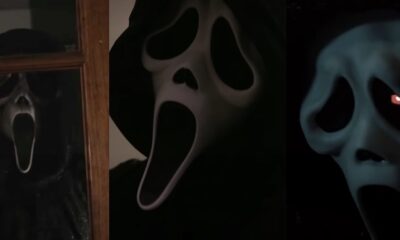
 Editorial6 days ago
Editorial6 days ago7 Great ‘Scream’ Fan Films & Shorts Worth a Watch
-
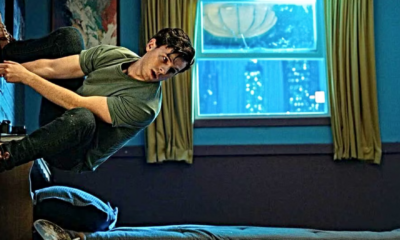
 Movies5 days ago
Movies5 days agoSpider-Man With a Cronenberg Twist in This Fan-Made Short
-

 News4 days ago
News4 days agoOriginal Blair Witch Cast Ask Lionsgate for Retroactive Residuals in Light of New Film
-
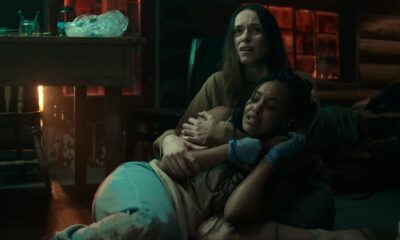
 Movies6 days ago
Movies6 days agoCannabis-Themed Horror Movie ‘Trim Season’ Official Trailer
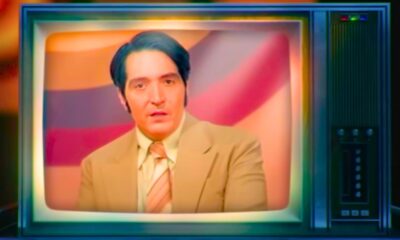

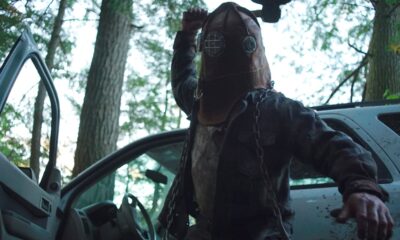






















You must be logged in to post a comment Login